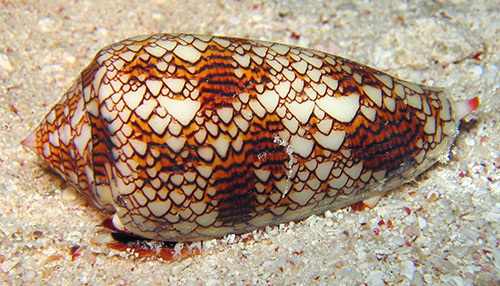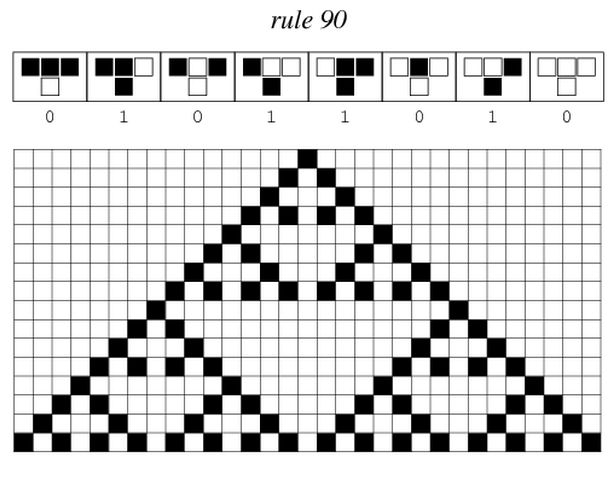Team:ETH Zurich/project/overview/summarysimple
From 2014.igem.org
 You might be wondering where these patterns on snea snail shells come from. What if they would come from a simple rule, followed by all cells on the shell ?
You might be wondering where these patterns on snea snail shells come from. What if they would come from a simple rule, followed by all cells on the shell ?

Automaton Explorer
Automaton Explorer
rule: 30
start:
From MathWorld:
"A cellular automaton is a collection of 'colored' cells on a grid of
specified shape that evolves through a number of discrete time steps
according to a set of rules based on the states of neighboring cells." This
example explores binary, nearest-neighbor, one-dimensional automata, of
which there are 256 (28) possible rules. The eight possible
outcomes for the current rule are shown across the top; click to toggle the
selected bit.
Gitorious
Activities Projects Teams About
<script>
/** Depends on globals: rule, w, h, mode. */
function cell() {
var d = pv.range(h).map(function() {
return pv.range(w).map(function() { return 0; });
}),
r = pv.range(8).map(function(i) {
return rule >> i & 1;
});
if (start == "point") {
d[0][w >> 1] = 1;
} else {
for (var x = 0; x < w; x++) {
d[0][x] = cell.random(x);
}
}
for (var y = 1; y < h; y++) {
var p = d[y - 1], c = d[y];
for (var x = 0; x < w; x++) {
c[x] = r[p[x - 1] << 2 | p[x] << 1 | p[x + 1]];
}
}
return d;
}
cell.$random = {};
/** Caches random output to make exploration deterministic. */
cell.random = function(i) {
return i in cell.$random ? cell.$random[i]
: (cell.$random[i] = Math.random() < .5 ? 0 : 1);
};
</script>
 "
"